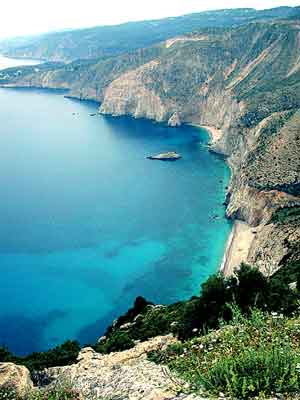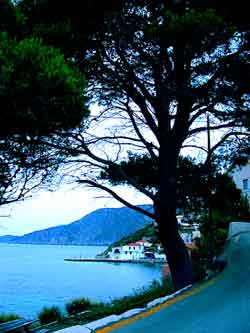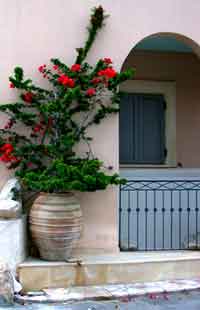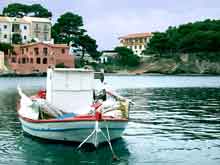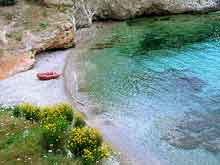Friday 7 June: Kefalonia, Greece

There is little beauty, however, in Kefalonia's man-made structures. A devastating earthquake in 1953
destroyed almost all of the island's buildings and what has been built since is pedestrian at best. We
were fortunate that our ship dropped anchor in the harbor off Fiskardo, the only locale on the island to
survive the earthquake. It is a port village with an intimate harbor and many picturesque 18th century
homes and shops. We had little time, however, to savor the town's beauty as we were immediately herded
aboard a bus for a short tour.
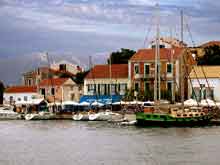
|
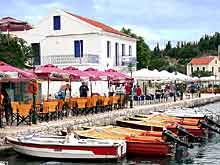
|
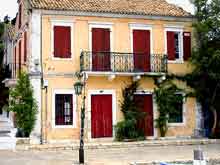
|
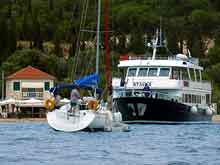
|
| The Village of Assos | |
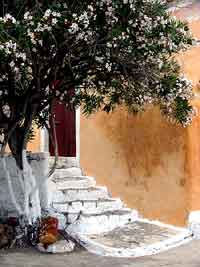
|
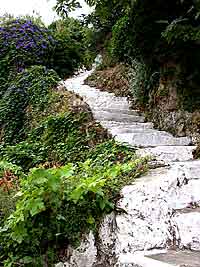
|
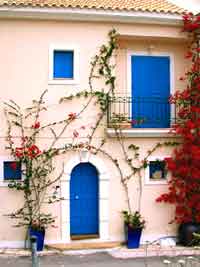
|

|
The Wind Surf sailed westward toward Sicily in semi-rough seas. The ship's stabilizers kept our ride pretty smooth, although some waves managed to reach up to our porthole. It would have been a fantastic ride on the Star Clipper!
Venice flooded today. We later learned that the great European storm had finally reached Venice, causing much of the city to flood. Wooden platforms were erected for pedestrians in many parts of the town, but most tourists were probably marooned in their hotels. I'm sure glad we left when we did.
|
Webmaster's note on the atypical grayness of the Ionian Islands.
During our voyage, the Adriatic was often unsettled. The sky was overcast. The sea was hazy. Venice was flooding. The weather will surely be different when you visit. In his beautiful, elegiac novel, Corelli's Mandolin, Louis de Bernières wrote of the Cephallonian light: "The choice of Apollo as a Cephallonian cult is both the most and least mysterious. It is the most inexplicable to those who have never been to the island, and the most inevitable to those who know it, for Apollo is a god associated with the power of light. Strangers who land here are blinded for two days. "It is a light that seems unmediated either by the air or by the stratosphere. It is completely virgin, it produces overwhelming clarity of focus, it has heroic strength and brilliance. It exposes colors in their original prelapsarian state, as though straight from the imagination of God in His youngest days, when He still believed that all was good." And that is reason enough to set sail for Ionia. |
